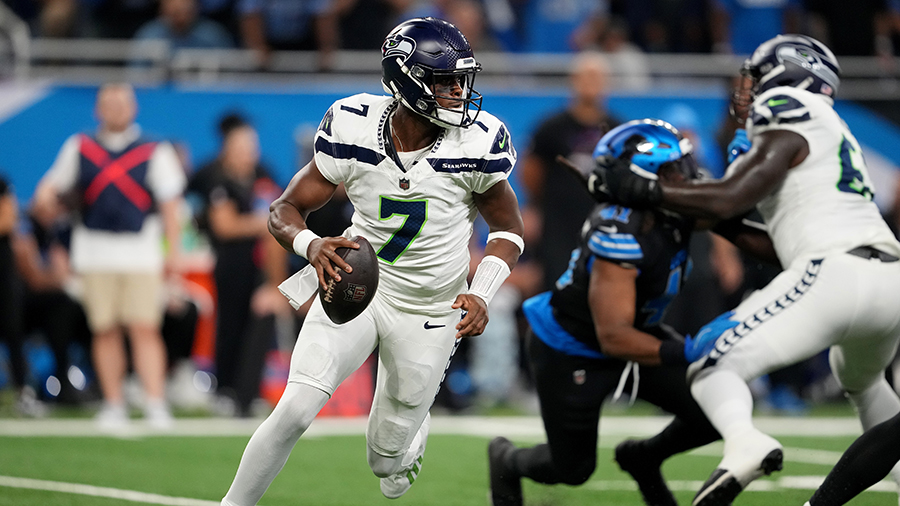Oregon
COCC will 'plant' Promise Garden of pinwheels before Central Oregon Walk to End Alzheimer's

BEND, Ore. (KTVZ) — In advance of the Central Oregon Walk to End Alzheimer’s on Sunday, Oct. 13, Central Oregon Community College is “planting” a temporary Promise Garden of the flower-like pinwheels that walkers carry to signify their connection to the brain disease.
COCC will have up to 100 pinwheels installed at 5 p.m. on Monday, Oct. 7, in front of the college’s Health Careers Center on the Bend campus. Members of the public are invited to view the garden.
“This is meant to raise awareness of the disease and create a tangible connection to Alzheimer’s for our staff, faculty, students and the broader community,” explained Jennifer Chance, COCC enrollment specialist and community engagement chair for the walk’s planning committee. “It symbolizes a promise to work toward a cure with advocacy, support and remembrance.”
A team of COCC faculty and staff, currently comprised of 13 members, is walking to raise funds for the Alzheimer’s research event, Chance added.
The Promise Garden will be relocated to Bend’s Riverbend Park on Oct. 13 for the one-mile walking event, with free registration starting at 11 a.m.
The event uses four color-coded pinwheels: Purple representing someone who has lost a loved one to Alzheimer’s; yellow representing someone caring for a loved one with Alzheimer’s; blue representing someone living with Alzheimer’s; and orange denoting participants who may not have a direct connection to the disease but who support the movement.
Held annually in more than 600 communities nationwide, the Walk to End Alzheimer’s is the world’s largest fundraiser for Alzheimer’s care, support and research.
For more information, contact Jen Chance at 541-504-2911 or jchance2@cocc.edu.

Oregon
Oregon Ducks Quarterback Dillon Gabriel Passes Bo Nix, Makes NCAA History
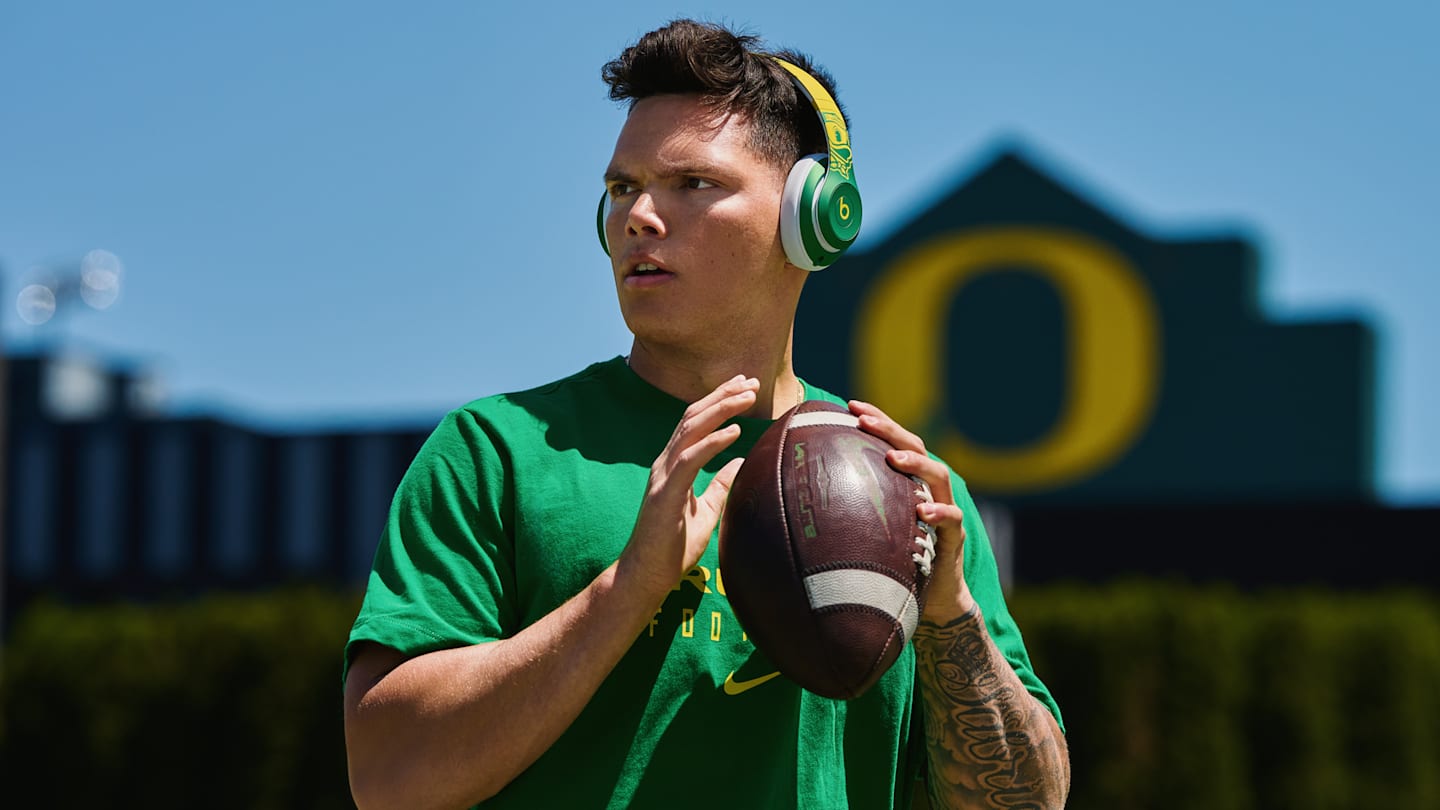
EUGENE- Oregon Ducks Starting quarterback Dillon Gabriel is climbing the ranks in college football. The Heisman-hopeful quarterback, after a solid performance in Week Five, surpassed former Oregon quarterback and current Denver Broncos starting quarterback Bo Nix to move into second for most career total yards (17,168) in NCAA history.
Former Houston Cougars quarterback Case Keenum (2007-2011) has the most career total yards with 20,114 yards.
In Oregon’s Big Ten opener against the UCLA Bruins, Gabriel played a good game with the exception of his first interception of the season. Gabriel completed 31-of-41 passes for 280 yards.
“I think Dillon had a really positive performance, excluding one play,” said Oregon coach Dan Lanning following Oregon’s 34-13 win over the Bruins. “I think he’s continued to prove to be a really savvy quarterback. He did a really good job. One of the things I was impressed with was Dylan and the way he utilized his feet when the first answer wasn’t there. You know, he did a really good job of that. And moving on to the next play.”
Gabriel is in his first season with the Ducks and is off to a successful start. Gabriel has thrown for 1,192 yards on the season, including nine touchdowns. Gabriel has also proven to be efficient on his feet, rushing for 49 yards and two touchdowns. Oregon’s quarterback is also still in the competition for the most prestigious award in college football: the Heisman Trophy.
Gabriel is currently ranked fifth in the Heisman Trophy race (+1400) behind Boise State’s Ashton Jeanty (+1000), Colorado’s Travis Hunter (+700), Miami’s Cam Ward (+500), and Alabama’s Jalen Milroe (+200).
Although Gabriel’s chances of securing a Heisman are still relatively high, his interception in Oregon’s most recent game against UCLA did slightly hurt his odds. In a Heisman race this tight, just one mistake could cost you your chance. However, with a stat line as impressive as Gabriel’s, his interception is to be noted but not something to be dramatically worried about. Alabama quarterback and current Heisman favorite Milroe also has one interception on the season.
Gabriel has been an instrumental piece in Oregon’s success so far this season, leading the Ducks to a 4-0 record. Gabriel and the Ducks will look to secure another win under the bright lights of Autzen Stadium on Friday, October 4th when the Ducks face the Michigan Spartans in their first home game in the Big Ten conference.
The Oregon Ducks own a 4-3 all-time record against the Spartans and are 3-0 against Michigan State in Autzen Stadium. The Ducks are also undefeated when playing at home in Autzen Stadium on Friday nights (6-0).
A win against Michigan State will be crucial for the Ducks as they look to build momentum for the road that lies ahead. The Ducks are set to face the Ohio State Buckeyes Saturday, October 12th at 4:30 p.m. PT in one of the most highly anticipated matchups of the year.
As Oregon prepares to face the Michigan State Spartans, Gabriel is continuing to look to continue his successful performance and lead the Ducks to another win as they continue on the road to a championship.
MORE: Oregon Ducks Recruiting Pushing To Flip USC Trojans Four-Star Commit
MORE: Largest College Football Stadiums: Ranking Oregon Ducks In Big Ten Conference
MORE: Justin Herbert Injury Update After Excessive Pressure Percentage By Kansas City Chiefs
MORE: Oregon Ducks Injury Update: Will Terrance Ferguson Be Available for Michigan State?
MORE: Oregon Ducks, Ohio State Kickoff Time Released: Schedule, Network, Prime Time
MORE: Big Ten Football Power Rankings: Oregon Ducks Challenging Ohio State For Top Spot?
MORE: Oregon Ducks’ Dan Lanning On Bryan Addison Possible Targeting on Terrance Ferguson
Oregon
State struggles to recover more than $24 million from people responsible for wildfires • Oregon Capital Chronicle

Each year, the Oregon Department of Forestry responds to about 1,000 wildfires across the 16 million acres of land it protects. It investigates the cause of every fire, and if a person or group is found to have been negligent or malicious in starting or spreading a significant fire, the agency pursues reimbursement for its firefighting costs.
The agency has not been very successful in recouping those costs, according to a report discussed at a March meeting of the four-member Emergency Fire Cost Committee.
The account offered a rare glimpse into the scale of the costs and the efforts to recover them. But it only represented a snapshot of the problem, excluding a full list of all the fires the state is investigating or pursuing for reimbursement, Jessica Neujahr, a forestry spokesperson, said in an email.
“That larger list is not one we can share,” she said, due to ongoing litigation and privacy concerns.
The report showed the forestry department spent at least $24 million to respond to 36 significant fires caused or spread negligently or maliciously by people or groups since 2004, and that in pursuing reimbursement, it has collected just $86,000 from “responsible parties.”
Few people who have started significant wildfires have millions of dollars to reimburse the department and sometimes investigating who is responsible, or trying to collect the money, can become too costly, according to Tim Holschbach, chief of policy and planning with the department’s fire protection division.
In those cases, the department moves on.
“We don’t want the effort to exceed the payback,” Holschbach said. “It wouldn’t make sense for us to spend taxpayer money to pursue recovery from someone who can’t pay.”
With climate change, wildfire seasons are becoming longer and often more destructive, affecting communities, infrastructure and land needed for grazing and farming. This year’s season, which is expected to end this month, scorched nearly 2 million acres across the state, setting a new record. Some of the fires were quickly put out, but others burned for weeks. The primary cause of wildfires this year was lightning strikes.
The agency considers a “significant” fire to be one that costs over $5,000 to fight, with the agency pursuing those it considers to have started or contributed to the blaze either willfully or through negligence, Neujahr said.
The agency listed 36 fires since 2004 that were willfully or negligently set in its report to the committee. It has accepted $86,000 in settlements and restitution for 17 of the oldest fires and is actively trying to recoup at least $15 million for 19 that started since 2011. It is also investigating 21 significant fires that occurred between 2020 and 2023 in an attempt to recover at least some of the $88.5 million spent to snuff them out. Agency officials don’t yet know whether they’ll identify a culprit to pursue for reimbursement in each case, Neujahr said
The Legislature recently voted to send the forestry department $47.5 million in emergency funding to help pay bills from fighting the current fire season, which has already cost the state $250 million.
Deciphering the cause
In investigating fires, state forestry officials first identify the point of origin, according to Holschbach. If they discover a tree slashed with a big black scar, they know the cause was probably lightning, or if a burn barrel used to burn trash is nearby, they know humans were likely involved. But other investigations are more difficult.
If they determine that someone is responsible and identify the party, officials send them a letter outlining the costs and demanding payment. That person has 90 days to respond to the letter before interest on the bill starts to accrue. If the culprit refuses to pay, the forestry department notifies the Oregon Department of Justice to determine other methods of collecting, Neujahr said.
Investigations can take years depending on how many people and federal agencies are involved, or how complex the case is, Holschbach said. The agency’s investigation also has to be able to stand up in court.
“We treat every investigation as if we’re preparing for litigation,” Holschbach said, adding that people have become increasingly litigious.
“We have to be more careful in our documentation, and more complete than we ever have been, and doing that really slows things down. Not that we were reckless before, or didn’t have complete reports, but it’s just more complex,” he said.
Working with federal agencies can slow things down, too.
The agency is still waiting for the U.S. Forest Service to complete its investigation of the Two Four Two Fire in 2020 near the Williamson River Campground in Klamath Falls, which burned more than 2,000 acres. The state agency is also still waiting on the forest service to finish its part of the investigation on the 2020 Holiday Farm Fire near Eugene that burned more than 173,000 acres and was one of the largest wildfires in Oregon history.
Firefighting costs
Every two years, the state sets the forestry department’s firefighting budget. The agency also collects fees from owners of the private land it protects, about three-quarters of the total 16 million acres. Those fees go into the Oregon Forest Land Protection Fund to help defer wildfire costs. It also helps to fight fires on federal land, and pays those costs upfront, but is reimbursed by the federal government.
Emergency fire costs that go beyond the biennial firefighting budget are paid by revenue from two sources, depending on the amount. Up to $20 million of emergency fire costs are split between the protection fund and Oregon’s general fund, which is used for a wide range of expenses and mostly comes from Oregon income taxes. Costs beyond $20 million are paid entirely by the general fund, Holschbach said.
When the department collects reimbursements, most of the money goes back to the general fund.
“The point of cost recovery is to take the burden off the taxpayer – off of Oregonians,” said Neujahr, the forestry department spokesperson. “If we can get that money back to the state, that’s the goal.”
But very little has been reimbursed. Agency officials said they drop investigations that become too complex and costly to pursue or when there’s little hope of recovering the money.
One example is the Sweet Creek Milepost 2 fire that started in Lane County in 2020 and cost more than $4 million to fight. In the end, the arsonist who was charged was only able to pay $154 to the forestry department.
In another fire – that was not included in the March report – the department recovered $200,000 after spending $37 million putting it out. The 2015 Stouts Creek Fire in Douglas County, which spread across 26,000 acres, was started by a guy mowing his lawn during a restricted period of hot and dry conditions. The department only recovered $200,000 because that was the limit on his homeowners insurance policy.
Many fires, like this one, could have been avoided with better judgment, Holschbach said.
“About 70% to 80% of fires are human caused, but most of those are not willful, malicious or negligent,” Holschbach said.
But they’re often expensive to put out – for the department and those found responsible.
Holschbach said those high costs are part of the reason the agency has launched campaigns to make the public more aware of mowing and debris burning restrictions.
“Don’t cause a fire. Don’t go there. Because you may end up paying for it,” he said.
GET THE MORNING HEADLINES.
Oregon
Getting To Know The Enemy: 5Qs About The Oregon Ducks

What up Spartans! It’s a short week for the football team so we will be accelerating our coverage for you. On Friday, the Green & White travels to Eugene, Oregon, to take on Big Ten newcomer, the Oregon Ducks. Obviously, this is the first time these two squads face off as conference foes, but there is history between the two programs. The Spartans and Ducks have met on the gridiron seven times previously, including three times in the past decade, most recently in an offense-starved Redbox Bowl on the last day of 2018 (Oregon won 7-6). To help us take a closer look at the current version of the Ducks, the man known simply as Badwater from Addicted To Quack joined me to answer a few questions. Let’s see what he had to say.
TOC: Welcome to the Big Ten. What were your initial thoughts when you heard the news that Oregon was moving to a new conference? How did you think the Ducks would adjust to life in the Big Ten? What were your expectations for them this year?
BW: I expected that Oregon would go to the B1G if given the opportunity. Sentiments aside, the Pac-12 was a failure as a conference – (former commissioners) Larry Scott was a failure, George Kliavkoff was a failure, and the B1G move was inevitable. Oregon athletics have been very much in the black for many years, unlike the other former Pac-12 additions to the B1G. See, it’s not just money from Phil Knight and Division Street at work – Athletic Director Rob Mullens runs a tight ship and he’s very good at what he does. Oregon does not need to come in with a full payout to 2030. What they needed, and got, was national brand exposure, and that’s what the move to the Big Ten offered.
The Ducks got what they wanted – exposure – and they will thrive in the B1G. The expectation is that they will make the playoff this year, and we’ll see what happens. No one is looking invulnerable this year, and I don’t think anyone is going to be surprised if Alabama, Georgia, Texas, Ohio State…or maybe even Oregon…wins it all this year.
TOC: Oregon came into this season as one of the popular picks for the national championship. But the Ducks did not look like that team in their first two games, struggling against Idaho and then just getting by Boise State. What was the problem in those two games? What have they been doing better these past two games, big wins over Oregon State and UCLA?
BW: The answer to this question boils down to the offensive line. Our Addicted To Quack site editor, hythloday, has 15 years of film study that demonstrates how a successful offensive line is created, and unlike all other position players, an offensive line has to have its own development culture and, by and large, cannot be plugged in from the transfer portal. The success of the Oregon offensive line is 20+ years in the making. It continues to be a developmental project, in that the coaches actively develop OL players.
My personal take is that the OL has had some struggles with rotation and communication. Both OL and DL rotate players in and out, and where other teams may have a starting 5 that they primarily stick with, Oregon has a starting 8 or so that rotate in and out, on both lies. Injuries complicate this ideal, and some injuries have affected the Oregon lines, but more so with the offense than the defense. The struggles with the OL have been with position, performance, and communication. What we’re seeing now, as opposed to the season opener against Idaho, is better communication and coaching.
Boise State has Ashton Jeanty. No one can stop him. He’s my Heisman (so far) pick for a reason; Boise State doesn’t have an OL of NFL starters…no, he gets the yards that he gets on personal effort and talent. I don’t think I’ve ever seen an RB like Jeanty. You can’t stop him, and that’s the story of Oregon’s game against Boise State, and that will be the story of everyone who plays against Boise State this year.
Oregon’s OL is settling in, and I think that will continue against Michigan State. Idaho is a decent team. The Ducks beat them, that is all. The next two weeks will reveal all frauds, be they Oregon or anyone else.
TOC: Bo Nix is off to the NFL. Dillon Gabriel is now the man for the Ducks in his sixth year of college football after 2 seasons at Oklahoma and 3 at Central Florida before that. What do you like about his game? What are his weaknesses? Do you think he will make it to and succeed in the NFL?
BW: I’ll say here what I’ve said before – I do not follow the NFL, and I only have a pedestrian knowledge of things/players in the NFL. I have no idea who can or will succeed in the NFL. That notwithstanding, my wife was married to a former NFL nose tackle, and I know that the Denver Broncos were very much interested in Nix all season last year, so I was not surprised that they picked him. It’s a good fit for him, and Elway is probably the best boss that a QB could be working for.
Gabriel is not quite as accurate as Nix, but I think that’s the product of mainly Gabriel being behind a line that was not as solid as Nix’s OL. Gabriel had been holding on to the ball too long, and he’s largely fixed that. But Dillon Gabriel is close to, but not as good as, Bo Nix. In reality, there are scores of football programs that wish they had the “problems” that Oregon has at the QB position.
TOC: Tell us about your defense. What is your base formation? What is the strongest level? Who is the one guy that opposing teams need to look out for?
BW: Oregon’s head coach is Dan Lanning, who was the defensive coordinator for Georgia’s championship team. What he brought with him is the Mint defense, and the ideology that it’s explosive passing that defeats an opponent, so you eliminate explosive passing…and many times it’s at expense of the (non-explosive) run. If your readers need/want further elaboration, then read hythloday’s extensive reviews or listen to his podcasts at ATQ.
https://www.addictedtoquack.com/2024/5/8/24155018/duck-dive-big-ten-football-2024-preview-compilation
Defense has been, and will be, a strong point this season. I can’t pin one guy as the player you need to watch for, because a great defense has great players on all three levels. I will point to two players: Jordan Birch has been an edge terror and will continue to be. Anyone that watched Oregon’s last two games knows about the secondary and knows that passes have been primarily going against Nikko Reed because no one wants to pass against Jabbar Muhammed. Watch Oregon’s secondary closely and you’ll see that this will be true against the Spartans.
The defensive weakness is at linebacker, but you may not know it when we face Michigan State. Jonathan Smith knows it, however, so watch for how he tries to exploit this weakness. Smith is a very clever coach.
TOC: What is the number one thing Michigan State needs to do in order to come away with a victory in Eugene?
BW: Michigan State needs to have success offensively. It’s not enough to win the turnover battle against Oregon – they will still crush you. The Spartans need to have sustained drives that result in points.
And mind you, Jonathan Smith knows this. He’s been very successful in Autzen, both as a player and a coach. Not all is lost for the Spartans, and even if you lose, Smith is going to make Michigan State better. Believe in that.
TOC: Bonus Question: Predict the final score.
BW: OMG I’m horrible at this. Anyone who has followed my picks on Off Tackle Empire knows that I do a decent job of picking the winner, but I’m awful at the spread. This is why I don’t gamble. Oregon 42, Michigan State 20.
TOC wishes to thank Badwater for his help with this piece. We hope you continue to be horrible at predicting scores.
-

 News1 week ago
News1 week agoElection 2024 Polls: Texas
-
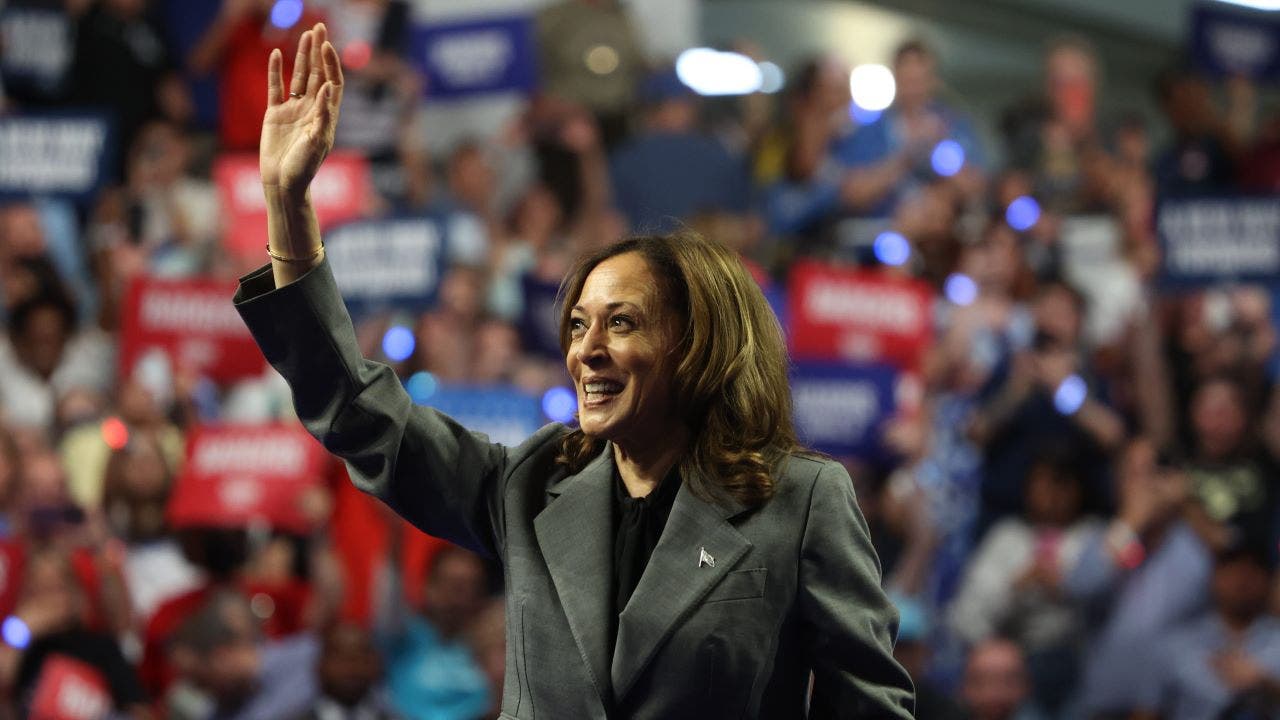
 Politics1 week ago
Politics1 week agoNew poll indicates whether Harris or Trump is making gains with younger voters
-

 World1 week ago
World1 week agoPhotos: The aftermath of a deadly Israeli attack on southern Beirut
-

 News1 week ago
News1 week agoVideo: Where Trump and Harris Stand on Democracy
-
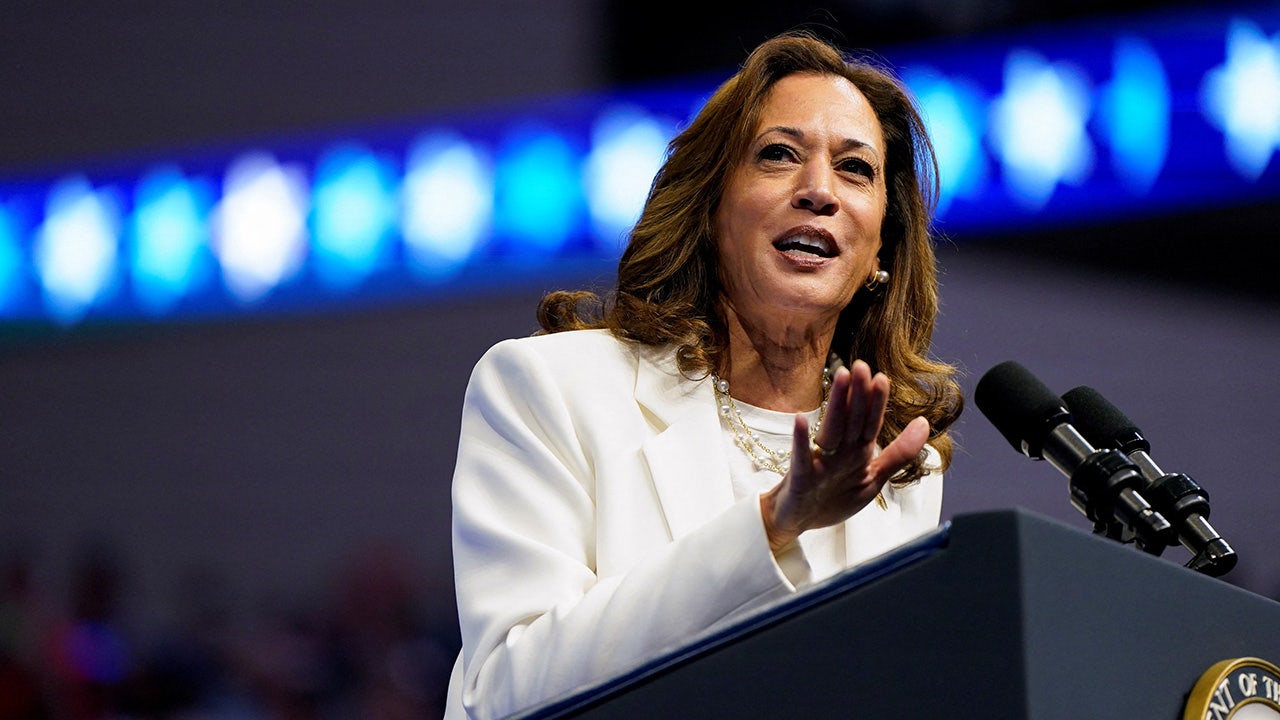
 Politics1 week ago
Politics1 week agoHarris calls for eliminating filibuster to pass 'Roe' abortion bill into federal law
-

 News1 week ago
News1 week agoRetired NFL Hall of Fame quarterback Brett Favre reveals he has Parkinson's disease
-
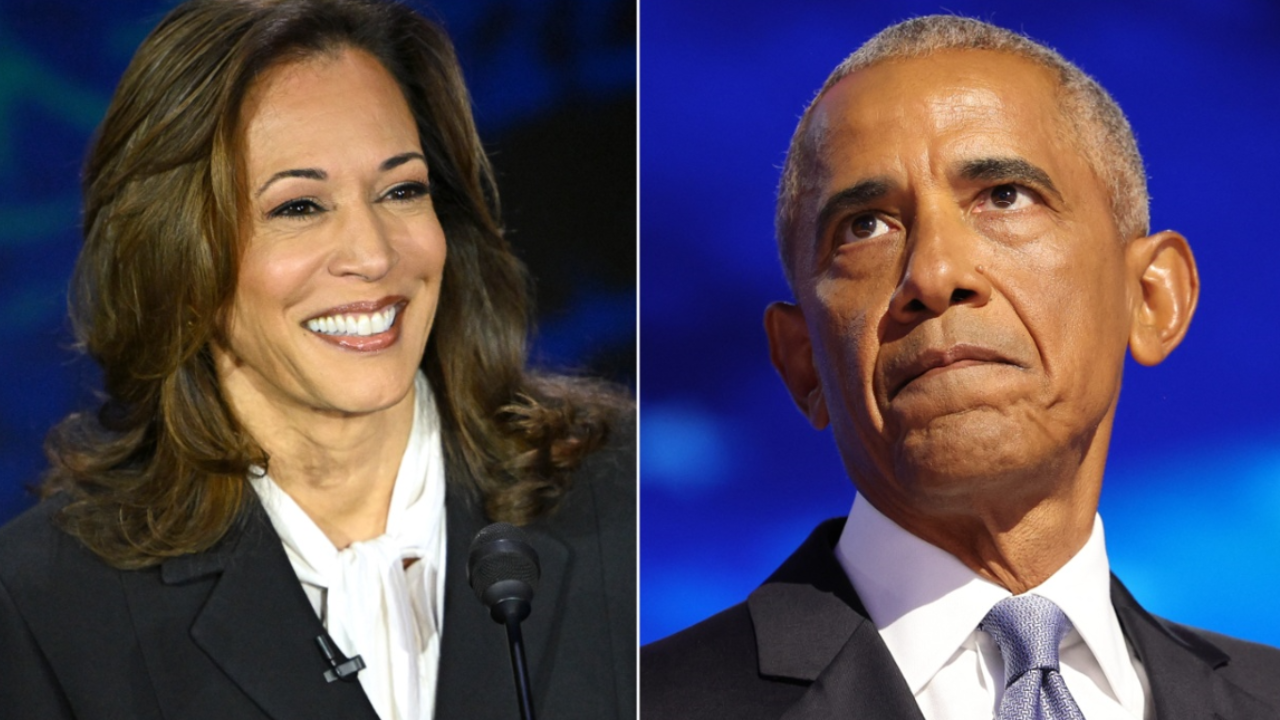
 Politics1 week ago
Politics1 week agoFLASHBACK: VP Harris pushed for illegal immigrant to practice law in California over Obama admin's objections
-

 Business1 week ago
Business1 week agoVideo: The U.S. Is Mining for Uranium





